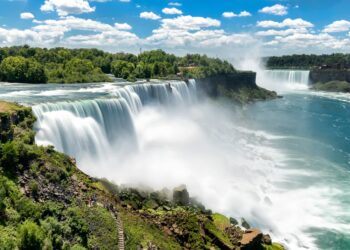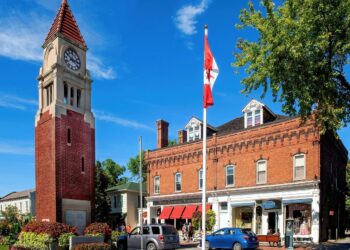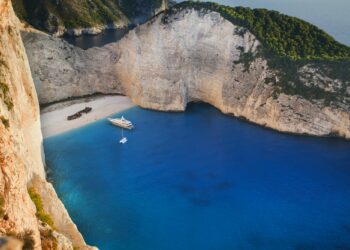There’s never really a bad time, but what is the best time to visit Ireland? Of course, the answer to this question depends on what you are looking for. There are essentially three travel seasons to consider as we plan your trip to Ireland, and each has its pros and cons.
- Peak Season (June-August)
- Off-Season (November – March)
- Shoulder Season (April/May or September/October)
Peak Season in Ireland (June-August)
Pros:
- Nice Weather: It’s summertime so you shouldn’t have to worry about it being too cold or wet ‘n wild with rain and winds.
- Long Days: It can stay bright until about 10 pm during the summer, so you’ll have plenty of daylight to explore and see the sights. Sometimes it seems like it never gets dark in the summer because there can be a slight glow in the night sky.
- The Mood: Everyone in Ireland loves the summer, and they get out to show it! The summer months seem to be a real celebration, and there’s always an upbeat vibe about the country. Kids are on holiday, playing and causing mischief. Farmers are literally ‘making hay when the sun shines’ by working late. The beer gardens are lively with local and foreign revellers.
- Attractions are open: With tourism in full flow, all attractions are open to the public.
- Fairs and Festivals: The Irish festival scene is buzzing during the summer with music, food and art festivals.
- Live Sports: From Gaelic football to soccer and hurling to horse racing, there’s no shortage of options to see a live sporting event during the summer. It’ll be a great spectacle and also brilliant fun if you want to go to the pub after the match (game) as well! Summer is the best time to visit Ireland for sports, and there should be a game on most weeks, close to where you are staying.
- Meeting people: It’s so easy to meet people in Ireland. All you have to do is say hello, and sometimes you don’t even have to do that before you’re in the middle of a conversation! If you happen to be travelling solo, summer is even easier. Hostels and Airbnb’s are full, pubs are hopping, and everyone is up for the craic!
Cons:
- Crowds: I’m slightly reluctant to put this in the ‘cons’ list because busy crowds are never that much of an issue, especially relative to France, Italy, Spain, even the UK cities in the summer. But if you have heard yourself utter the words “there were so many tourists,” then remember that Summer is the peak season for tourism.
- Higher costs: Just like the farmers, businesses need to make hay when the sun shines, so expect peak prices for accommodations, tours and travel.
Conclusion: Summer’s are great in Ireland, and the pros certainly seem to outweigh potential cons. Planning a trip to Ireland is definitely worth it.
Affiliate Disclaimer: Our blog posts may contain affiliate links. If you make a purchase through these links, we receive a modest commission at no extra cost to you. These commissions help us fund our team of travel writers, allowing us to continue providing you with the latest travel news, tips, and inspiration. Your support keeps this blog alive and thriving, and we appreciate it immensely. Thank you!

Off-Season in Ireland (November – March)
Pros:
- Not Crowded: Fewer folks travel to Ireland during this time, so you won’t have to battle too many crowds.
- Better Prices: Tour companies, hotels, attractions are priced lower. Most companies will reduce prices or offer other incentives to stimulate customers. Flight deals are also available, with the possible exception of the Christmas Holiday window, depending on where you are flying from.
- Christmas time: This is one of my favourite times to be in Ireland. There’s a great buzz about the country, and towns are lit up with decorations. Most workers outside of retail or public service get close to two weeks off between Christmas and New Year, so there’s plenty of craic in the pubs, especially on St. Stephen’s Day (December 26th) and New Year’s eve, of course.
- Meet the locals: Everyone is in the swing of things with kids at school, parents working, and people getting on with their daily lives. You’ll have less competition for ‘tourist attention’ and can be guaranteed a good conversation if you wander into a local pub.
- Deciding to live there: This is the ‘warts and all’ time of year, so if you want to experience the ‘real Ireland,’ then this can be an excellent time to go. If you are considering moving to Ireland long-term, then you should see how you like it during this time of year.
Cons:
- Weather: You probably won’t be travelling to Ireland during this season for ‘nice’ weather unless you enjoy cloudy, good-chance-of-rain, can-get-very-cold, can-be-foggy weather. The misty and moist conditions can create a particular atmosphere, especially around the coast, mountains and rivers.
- Short Days: I remember it used to seem dark when I woke up and dark when I got home from work. So for planning purposes, especially if you doing activities, plan for 8 am-4 pm daylight with wiggle room depending on the month. This is a good tie of year to sit by a turf fire and enjoy a good chat over a few pints!
- Attractions opening hours: Some places are closed altogether, with many others operating on reduced hours. It’s best to check ahead of time.
- Atmosphere: With the dreary weather, the mood can change too. There are fewer people, so if you want to meet many travellers, this is not the best time to go.
- Extra Packing: Bring warm clothes! And shoes/boots that can navigate puddles.
Conclusion: Pack the warm clothes and get ready to enjoy Ireland as it is for the locals. If you are a writer or poet, this may be the time of year for you to go! So much of the best literature to come from Ireland was influenced partly by long winters. So from a cost perspective, Winter is the best time to visit Ireland. Just don’t expect much sun!

Shoulder Season in Ireland (April/May or September/October)
Pros:
- Decent Weather: When I went to school in Ireland, it seemed that the weather would be perfect as soon as we went back to school in September after the summer holidays. May can be nice too. ‘Changeable’ is a good description of this time of year, but especially in September and May can be pretty nice.
- Most attractions are open: Most are total open hours from April – October.
- Fairs and Festivals: Many Irish festivals are on during this time.
- Live Sports: Gaelic football and Hurling matches will be on, although not with the same frequency. The soccer season is on too. Horse-racing meetings will be in May and September.
- Limited tourists: A great time to meet the locals as there are fewer tourists, so crowds are fewer.
- Rooms available: Hostels, hotels and B&Bs still have spaces open.
Cons:
- Changeable weather: Hard to predict, so it’s better to be prepared and either pack for four seasons or enjoy shopping for some clothes.
- Some attractions are closed: As tourism falls off, some attractions reel back their opening hours earlier.
Conclusion: This can be a great time of year to visit, especially if you have some flexibility. Travel and tourist package deals are available, and the other ingredients are there for a fantastic holiday or vacation.
So The Best Time to Visit Ireland Is…
Well, it’s entirely up to you and depending on your goals, resources, or limitations. I love going back at different times of the year because each season (and even month) can offer something different, especially for me when visiting with friends and family or if there’s a specific event going on.











